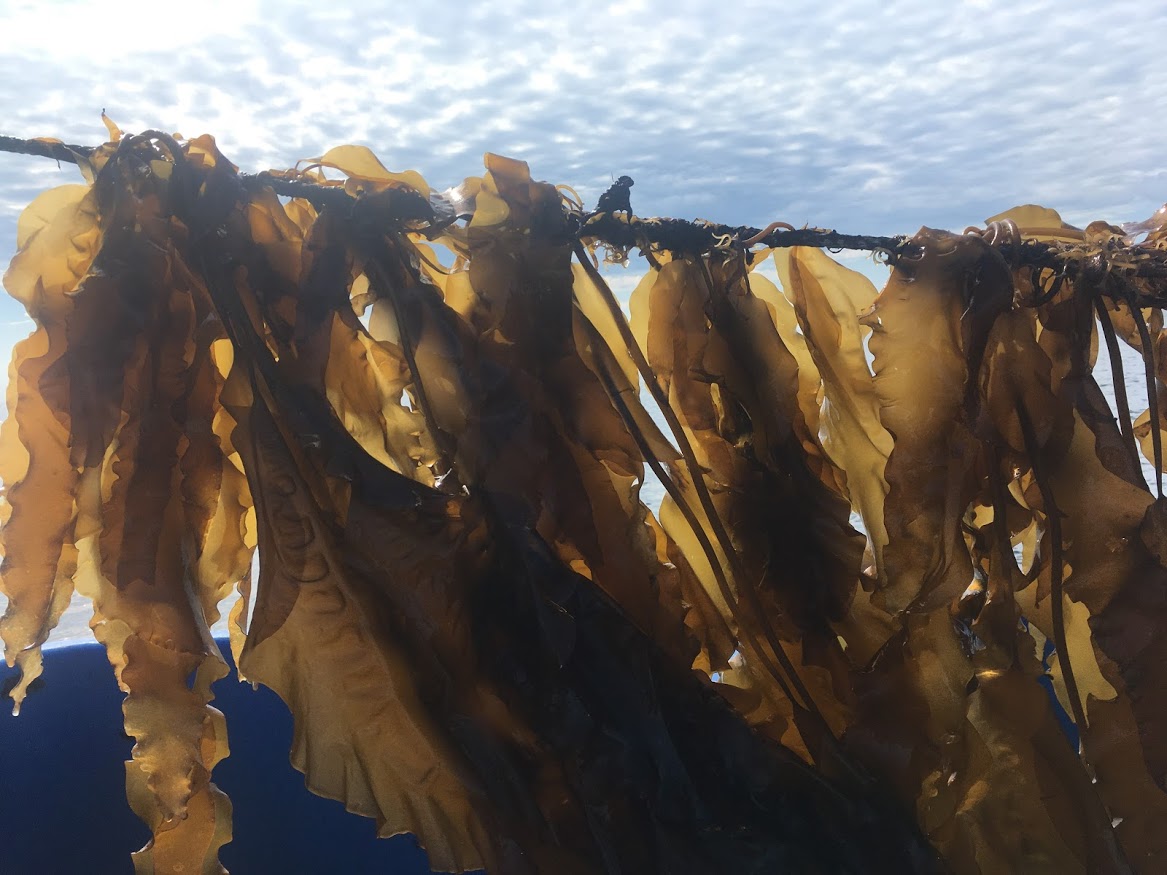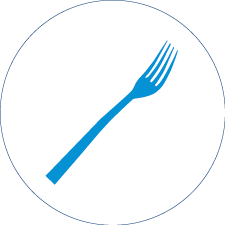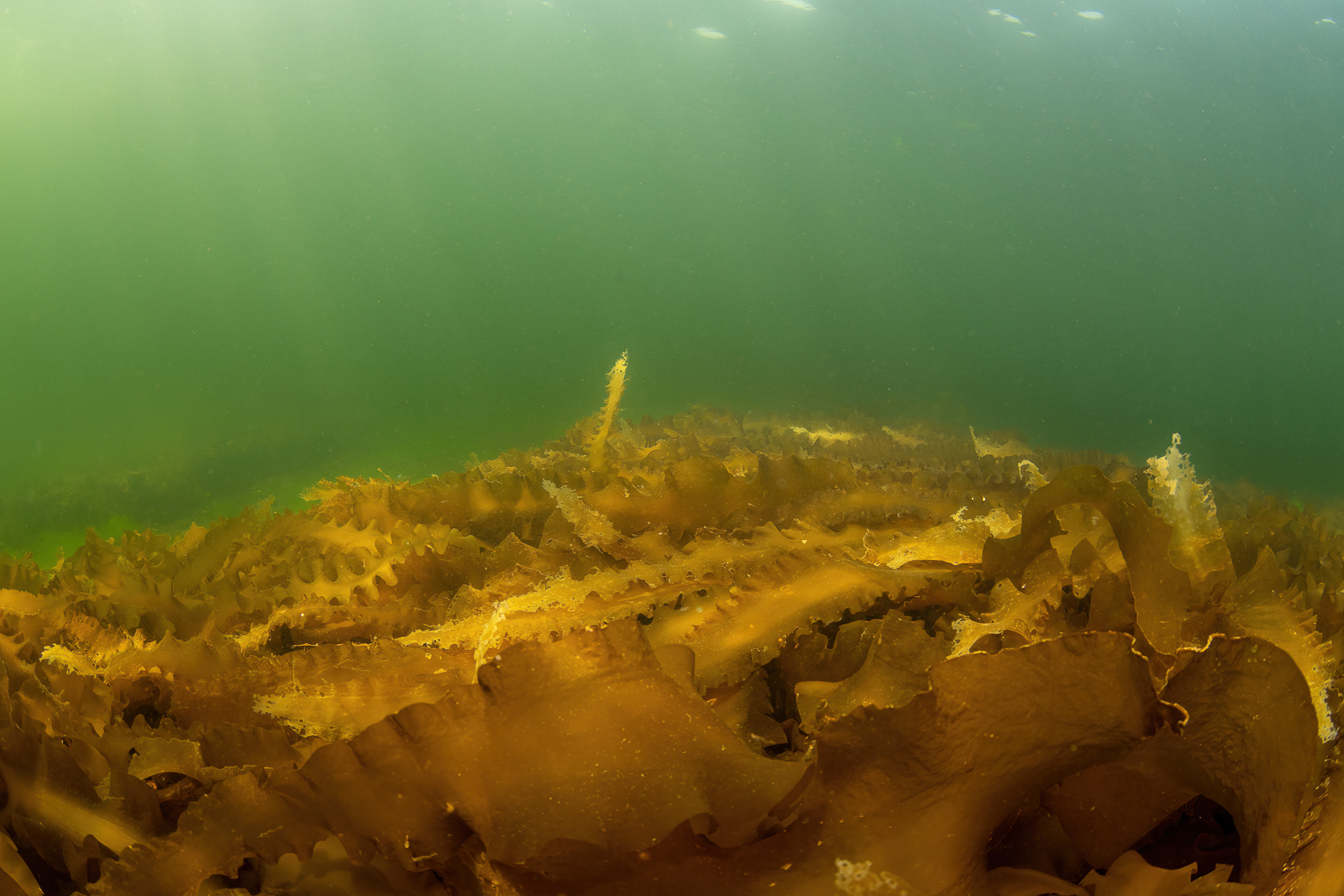
SIZE:
1 to 2 m, up to 7 m.
LIFE EXPECTANCY:
3 to 5 years.
LIFE CYCLE:
Sexual maturity is attained around 1 or 2 years.
Sugar kelp grows rapidly in spring, with a record growth of 4.87 cm in a single day.
At the end of June, its growth slows down, and the kelp concentrates its energy on accumulating sugar and creating spores. These are released between August and October.
Sugar kelp grows from the area located between its stipe and its fronds. If it is cut below this area or pulled out, it will no longer be able to regenerate.
A gourmet cradle
These algae provide a perfect nursery for lobster larvae. The larvae can hide in kelp forests while having easy access to food. Green sea urchins, a lobster’s favourite meal, love sweet kelp and are often found in the same area.
Its fronds look like a broad lasagna pasta, flat and crimped in the centre, with thin, wavy edges. Depending on the sugar kelp’s location, its stipe can vary from a few centimetres to several metres in length. Quite flexible, the stipe enables the kelp to follow the movement of waves without tearing. Its holdfasts are thin and few in number.
Coastal zone, up to 15 m depth, below the low tide zone and near the shore
Sweet kelp favours cold water and prefers sheltered or semi-sheltered areas.

Kelp clings to the bottom with spikes.
Credit: Éric Tamigneaux
PREYS:
CO2
Solar energy
PREDATORS:
Herbivorous molluscs
Green sea urchins
MACHINES:
Hand harvesting, rope seeding and cultivation.
REGULATIONS:
Harvesting requires a permit. It must be done by cutting the kelp where it can regenerate, not by tearing it off.
When diving for kelp, the harvested surface must not exceed 15 m in diameter. Harvested surfaces must be 15 m from each other.

Algaculture is becoming increasingly popular in Québec.
Credit: Éric Tamigneaux, photo taken in Paspebiac in 2019.
Sugar kelp is a Smarter seafood-listed species.
BENEFITS:
Eating a few grams a day of dried Royal kombu, which is rich in iodine, helps to maintain healthy thyroid function. However, be careful not to overdo this consumption to avoid thyroid dysfunction.
Kelp is also rich in antioxidants and provides an important source of minerals. Because of its iron content, kelp can help reduce the risks of anemia. Its vanadium content also helps regulate blood sugar levels.
Psst! Sugar kelp is also a source of soluble fibre. So, as well as being a great addition to any dish, it also helps to improve digestion and to prevent constipation.
LET’S COOK:
Iodized and slightly sweet taste
OUR CULINARY ADVICE:
- Often used in a dried, crumbled form.
- Can be used as a thickener or flavour enhancer in soups or salads.
- Makes legumes more tender and digestible when added to cooking water.
- Can also be used as a base for broth.
- Its fronds can be used to make fish or seafood papillotes. This method of steaming under hot stones is already widely used by the Innu, Mi’gmaq and Inuit.
The waters of the St. Lawrence are known for their good quality. However, as algae absorb the elements present in the water to grow, it is preferable to ensure that the harvesting site is clean before eating this species fresh.






